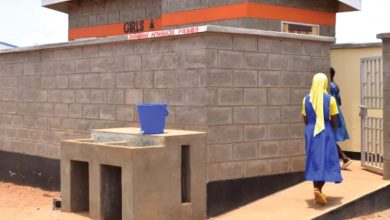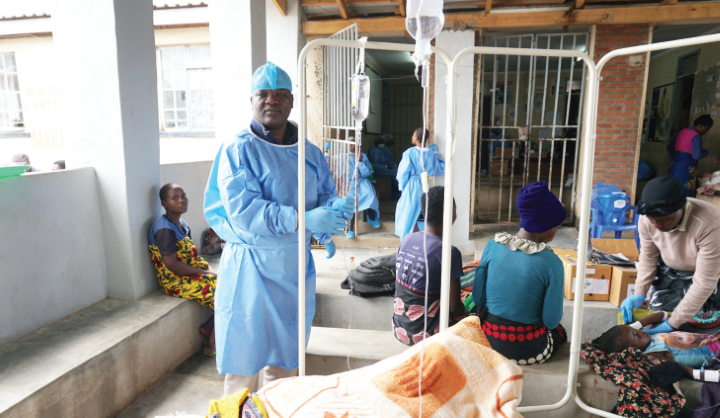Circumcising HIV’s problem

HIV and Aids continues to be a central health challenge across the world, especially in sub-Saharan Africa countries like Malawi where poverty is absolute and widespread.
Doctors, scientists and other experts across the world have, for years, worked hard to find the cure for the pandemic.
But the disease, without cure, continues to claim millions.
Of course, the 2010 Demographic Health Survey (DHS) shows a decline in HIV prevalence in the adult population from 16.2 percent to 10.6 percent.
This, the survey shows, is due to the policies and prevention methods that the Malawi Government has adopted in trying to reduce the spread of HIV and AIDS transmission.
Yet despite that, over 70 000 people in the country still test HIV positive every year and the population of HIV and Aids patients continues to soar.
Those concerned with the problem of reducing the spread are all over researching new ways. And recently male circumcision has been found to be one of the ways.
The 2012-16 Malawi Voluntary Medical Male Circumcision Communication Strategy says studies conducted in Kenya and Uganda showed the reduction in risk in HIV acquisition of 53 and 48 percent respectively among circumcised men.
Of course, male circumcision is not a maiden practice in Malawi. For years it has been practised in some traditional cultures and religious groupings.
However, District Health officer at Bwaila Hospital in Lilongwe, Dr. Mwai Mwale, says an effective male circumcision surgery is done in a medical manner.
“It is said circumcision reduces sexually active men’s chances of becoming infected with HIV by 60 percent. However it needs to be medically done by experts at hospitals,” explains Mwale.
He says together with other HIV prevention methods, including abstinence, being faithful and using a condom (popularly referred to as ABC), circumcision is being promoted in Malawi among male adult population with the aim of reducing the spread of HIV and Aids.
Mwale also expounds that male circumcision is hygienic and reduces first, the risk of urinary tract infections in childhood and risk of some sexually transmitted diseases in men.
Minister of Health, Catherine Gotani Hara says Malawi has since put in place the national policy for medical male circumcision, the communication strategy for male circumcision and a draft Nation Scale-up Plan.
“The compelling evidence demonstrated by the randomised control trials in South Africa, Kenya and Uganda, that male circumcision reduces the risk of HIV acquisition up to 60 percent gave us another sounding evidence to adopt Voluntary Male Medical Circumcision [VMMC],” says Gotani Hara.
She adds that the Malawi Government through her ministry has targeted 60 000 adult male population to be circumcised within 30 days from month-end of July to month-end of August this year in a VMMC campaign.
“This is our second VMMC campaign. The first campaign took place in Mulanje and a total of 4 516 men were circumcised out of 5760 that were targeted. Now we are targeting the six districts of Nkhotakota, Lilongwe, Blantyre, Mulanje, Thyolo and Phalombe,” discloses Gotani Hara.
As stated earlier, the practice is not new in Malawi. A lot of men and boys belonging to some traditional set ups and religions have been circumcised.
But do these people then have the 60 percent protection from HIV? If they do, then why is it that there is still high HIV prevalence rate in these areas where circumcision is readily done?
“It has been discovered that a lot of traditional circumcision is only partial circumcision. It does not involve the complete removal of the foreskin and thus the cells which have high concentration of HIV entry points are not completely removed,” explains Gotani Hara.
She adds that most of the traditional circumcisions are not done hygienically as it has been found out that the materials used are the same for two or more persons and this increase the risks of HIV transmission.
“Some cultural practices also encourage young men who have been circumcised to have unprotected sex while the person is not yet healed. This also increases the spread of HIV and Aids,” she underlines.
Gotani Hara stresses that Malawians who have already been circumcised traditionally need to go to hospitals to find out if their circumcision was safely and medically done.
“It should also be known that male circumcision is not a stand-alone intervention to prevent HIV as there is still a 40 percent chance of getting infected as medical experts says, circumcision need to be done alongside other preventive measures like use of condoms,” she says.
Still circumcision is not a must do thing even if it is mentioned in the Quran and the Bible.
Robert Ngaiyaye, who is the executive director of the Malawi Interfaith Aids Association, says the practice of male circumcision is not attached to any religion, modern or tradition.
“It may have been promoted in the Quran and the Bible’s Old Testament, and later condemned in the New Testament, but circumcision is not a religious issue. It is a medical matter aiming for good health and thus highly recommended,’ clarifies Ngaiyaye.






Whether for the reasons suggested in the article (unhygienic or incomplete circumcision, sex too soon after the operation, etc.) or for some other reason, circumcision does not seem to provide any protection: “In Malawi, circumcised men have a slightly higher HIV infection rate than men who were not circumcised (13 percent compared with 10 percent)” (World Health Organisation Report 2005); “According to the latest Zimbabwe Health Demographic Survey (ZHDS 2010/2011), the prevalence rate among the circumcised is 14 percent while that of the uncircumcised is 12 percent.” Men who have themselves circumcised under the impression that they will be safer may therefore be chasing a myth. It certainly does not provide the global protection which is claimed for it.